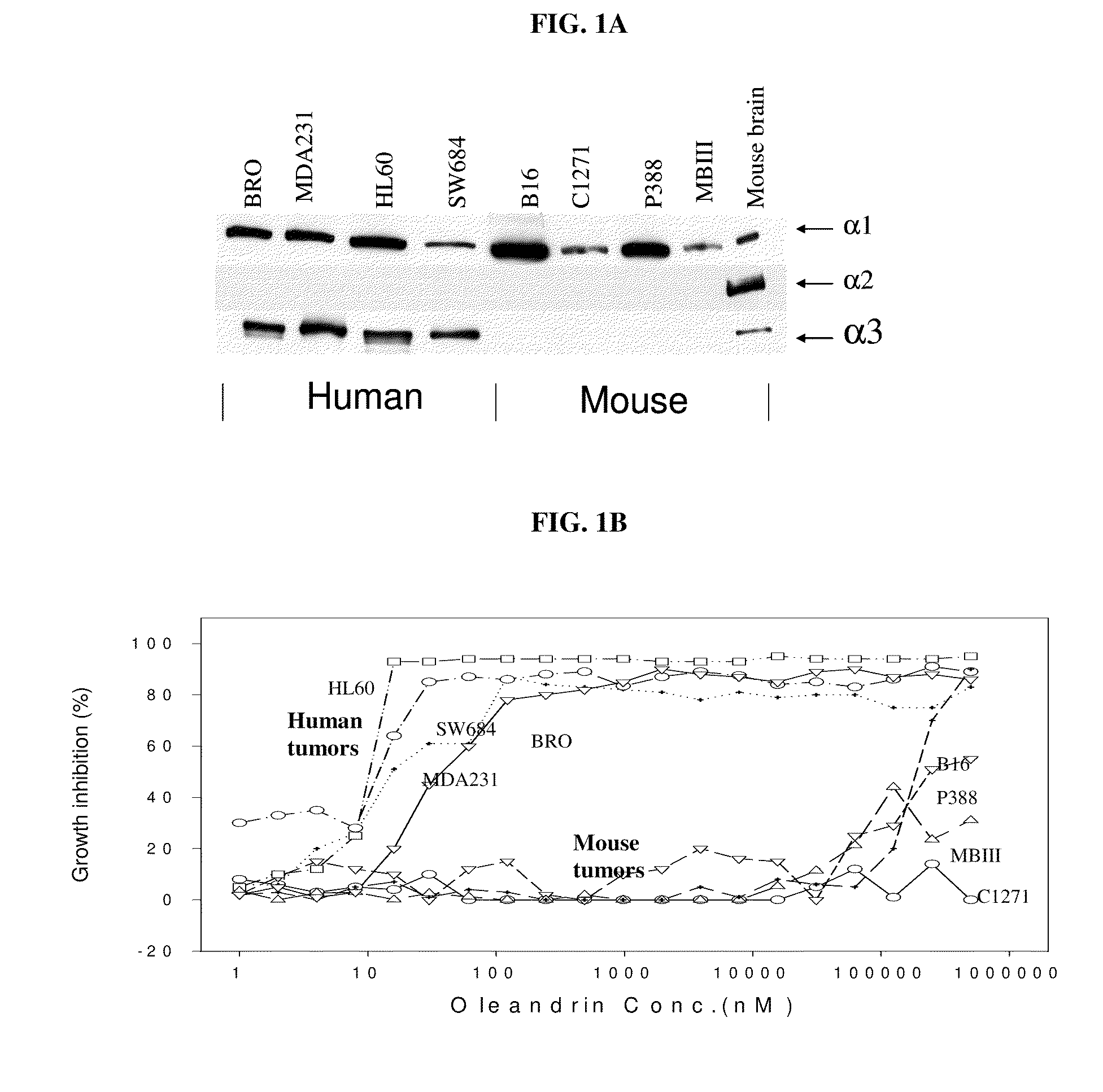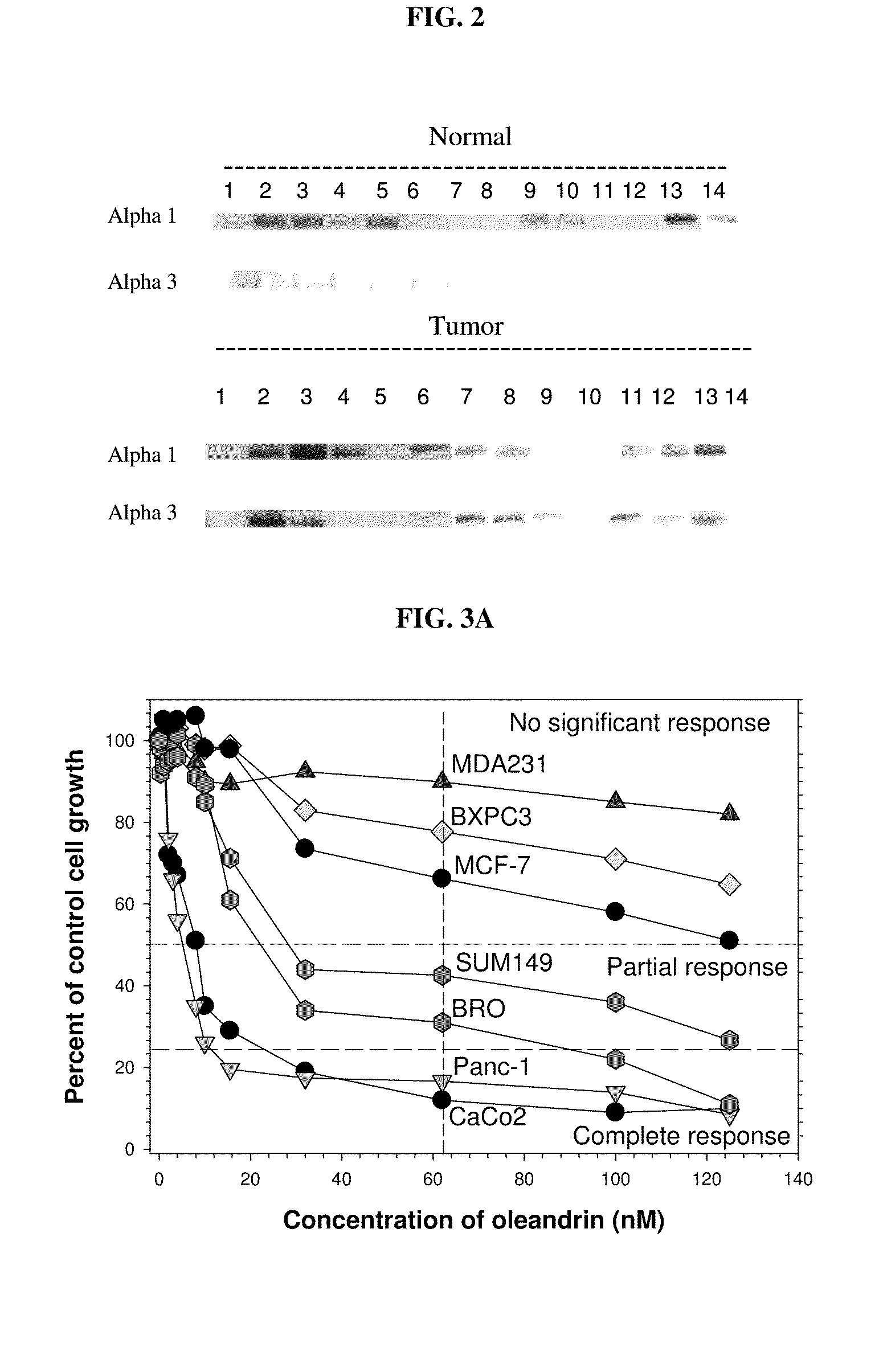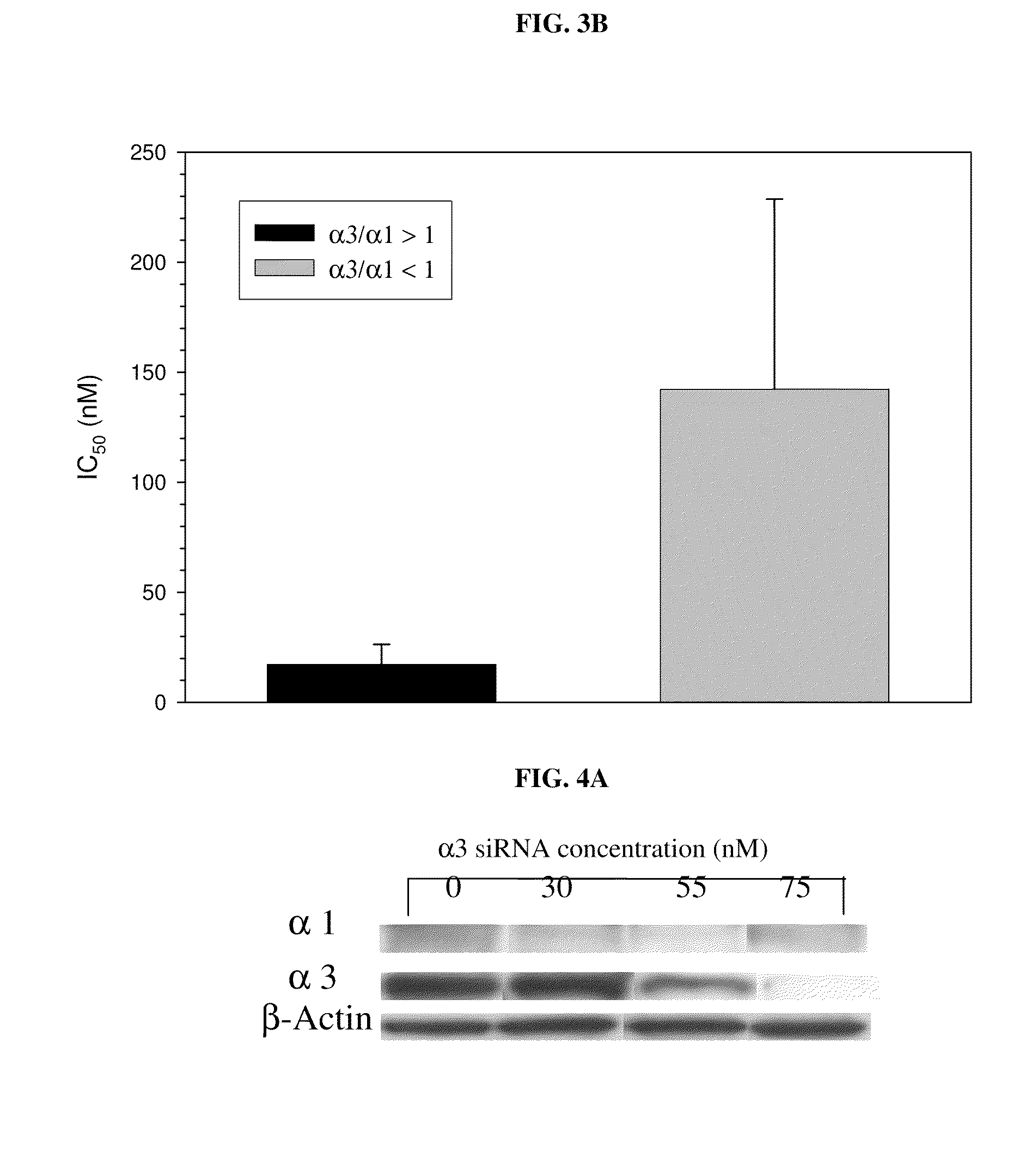Method of determining the probability of a therapeutic response in cancer chemotherapy with cardiac glycoside
a cancer chemotherapy and cardiac glycoside technology, applied in the direction of drugs, instruments, immunological disorders, etc., can solve the problems of no comprehensive or universally curative therapy, and many diseases and disorders whose etiology is associated with excessive cell proliferation, etc., to achieve sensitivity or therapeutic responsiveness, the effect of increasing the ratio of 3 isoform
- Summary
- Abstract
- Description
- Claims
- Application Information
AI Technical Summary
Benefits of technology
Problems solved by technology
Method used
Image
Examples
example 1
Supercritical Fluid Extraction of Powdered Oleander Leaves
Method A. with Carbon Dioxide.
[0151]Powdered oleander leaves were prepared by harvesting, washing, and drying oleander leaf material, then passing the oleander leaf material through a comminuting and dehydrating apparatus such as those described in U.S. Pat. Nos. 5,236,132, 5,598,979, 6,517,015, and 6,715,705. The weight of the starting material used was 3.94 kg.
[0152]The starting material was combined with pure CO2 at a pressure of 300 bar (30 MPa, 4351 psi) and a temperature of 50° C. (122° F.) in an extractor device. A total of 197 kg of CO2 was used, to give a solvent to raw material ratio of 50:1. The mixture of CO2 and raw material was then passed through a separator device, which changed the pressure and temperature of the mixture and separated the extract from the carbon dioxide.
[0153]The extract (65 g) was obtained as a brownish, sticky, viscous material having a nice fragrance. The color was likely caused by chlorop...
example 2
Hot-Water Extraction of Powdered Oleander Leaves
[0157]Hot water extraction is typically used to extract oleandrin and other active components from oleander leaves. Examples of hot water extraction processes can be found in U.S. Pat. No. 5,135,745 and No. 5,869,060.
[0158]A hot water extraction was carried out using 5 g of powdered oleander leaves. Ten volumes of boiling water (by weight of the oleander starting material) were added to the powdered oleander leaves and the mixture was stirred constantly for 6 hours. The mixture was then filtered and the leaf residue was collected and extracted again under the same conditions. The filtrates were combined and lyophilized. The appearance of the extract was brown. The dried extract material weighed about 1.44 g. 34.21 mg of the extract material was dissolved in water and subjected to oleandrin content analysis using high pressure liquid chromatography and mass spectrometry. The amount of oleandrin was determined to be 3.68 mg. The oleandri...
example 3
Cell Lines
[0160]Human pancreatic cancer cells: Panc-1, BxPC3, MiaPaca; human colon cancer cell lines: CaCO-2, DOD-1, HCT-116, HT29, RKO and LST174; rodent melanoma B16 cells; human breast cancer cells: SUM149, MCF-7 and MDA231; human oral cancer cells: SCC9 and CAL-27; human ovarian cancer ES3, TOV1120 and SKOV cells and human non-small cell lung cancer A549 and H1299 cells were obtained from the American Type Culture Collection (Manassas, Va.) and maintained in a humidified atmosphere containing 5% CO2 at 37° C. Human melanoma BRO cells were a kind gift from the Stehlin Foundation (Houston, Tex.). Cell lines derived from different epithelial origins were routinely cultured in tissue culture medium (Invitrogen Corp., Grand Island, N.Y.) (Table 1) supplemented with 10% heat inactivated fetal bovine serum (FBS) Hyclone Laboratories Inc., Logan, Utah), 50 IU / ml penicillin and 50 μg / ml streptomycin, and 2 mM L-glutamine from GIBCO (Invitrogen).
PUM
| Property | Measurement | Unit |
|---|---|---|
| concentration | aaaaa | aaaaa |
| concentration | aaaaa | aaaaa |
| concentration | aaaaa | aaaaa |
Abstract
Description
Claims
Application Information
 Login to View More
Login to View More - R&D
- Intellectual Property
- Life Sciences
- Materials
- Tech Scout
- Unparalleled Data Quality
- Higher Quality Content
- 60% Fewer Hallucinations
Browse by: Latest US Patents, China's latest patents, Technical Efficacy Thesaurus, Application Domain, Technology Topic, Popular Technical Reports.
© 2025 PatSnap. All rights reserved.Legal|Privacy policy|Modern Slavery Act Transparency Statement|Sitemap|About US| Contact US: help@patsnap.com



